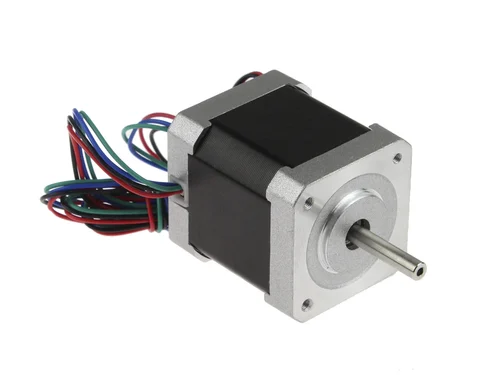The global demand for stepper motors continues to grow steadily, driven by their essential role in various industries and applications requiring precise and controlled motion. Apart from its use in industries and commercial applications for daily life tasks, it has been largely utilized for the production of robotics. These motors are durable, versatile, and highly reliable that can work in any sort of environment.
Despite the fact it is low cost and affordability, its market size is concerned, the stepper motor market is going to make a whooping number of millions by 2032.
Additionally, stepper motors are favored for their ability to accurately position and control rotational movements in a wide range of automated systems.
There are around 10 applications of stepper motors however, we are going to discuss some of them.
7 Applications of Stepper Motor
- Industrial Automation and Robotics
Stepper motors buyers are extensively used in industrial automation, where they power robotic arms, automated machinery, and conveyor systems. Industries such as automotive manufacturing, food processing, and packaging rely on stepper motors for tasks that require precise positioning, repetitive movements, and reliable performance. The demand in this sector is driven by the ongoing trend towards increased automation and efficiency in production processes. As robots are hitting the market the demand for top quality stepper motors are increasing with time.
- CNC Machines and 3D Printing
In the manufacturing sector, stepper motors are crucial components in CNC machines for controlling the movement of cutting tools and positioning of workpieces along multiple axes. Their precise control capabilities ensure accurate machining and shaping of materials in industries ranging from aerospace and electronics to woodworking and metal fabrication. Similarly, stepper motors play a vital role in the operation of 3D printers, where they drive the movement of print heads and build platforms, enabling the layer-by-layer deposition of materials with high precision. So, if you are running a printing machine business and need some spare stepper motors then you can find these machines from stepper motor buyers online on e-commerce platforms.
- Consumer Electronics and Appliances
Stepper motors are essential to various consumer electronics and household appliances. They are used in printers for paper handling and print head movement, in scanners for precise document scanning, and in-camera lenses for autofocus mechanisms. Stepper motors ensure smooth and accurate operation in devices such as copiers, disk drives, and household appliances like washing machines and robotic vacuum cleaners, where precise control of movement is essential for functionality and user experience.
- Medical and Laboratory Equipment
In the medical and healthcare sectors, stepper motors are employed in diagnostic equipment such as MRI machines, CT scanners, and ultrasound devices. They enable precise positioning of scanning components, ensuring accurate imaging and diagnosis. In laboratories, stepper motors control robotic systems for sample handling, pipetting, and dispensing, supporting research and diagnostic processes that require precise and repeatable movements.
- Automotive and Aerospace
Stepper motors play critical roles in automotive applications, powering instrumentation panels, automated systems in assembly lines, and precision control mechanisms in-vehicle components. They are also utilized in aerospace for tasks such as antenna positioning systems, telescope mounts, and satellite tracking devices, where accurate and reliable movement is crucial for communication and navigation systems.
- Renewable Energy and Environmental Applications
The demand for stepper motors is also growing in renewable energy sectors, including wind turbine controls, solar panel tracking systems, and environmental monitoring equipment. These applications require stepper motors to maintain precise alignment and positioning, maximizing energy efficiency and operational performance in harsh environmental conditions.
- Emerging Technologies and Innovations
Advancements in automation, robotics, additive manufacturing, and IoT (Internet of Things) continue to drive the demand for stepper motors. As industries adopt smart technologies and interconnected systems, the need for stepper motors with enhanced precision, reliability, and integration capabilities is expected to increase.
Summing up
In conclusion, the global demand for stepper motors is robust and diversified across industries that require precise motion control, automation, and reliable performance. As technological advancements and industrial automation trends continue to evolve, stepper motors are likely to remain indispensable components in modern machinery and systems worldwide.



